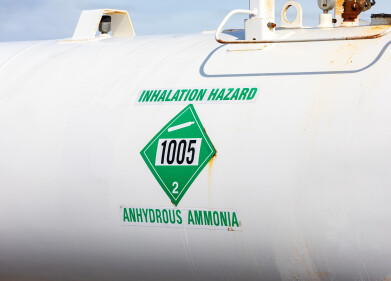Hydrogen fuel
An Introduction to Cetane Numbers
May 01 2019
When understanding the efficiency and performance of fuel, the standard measurements are the octane and cetane numbers. But what exactly is the difference between these two figures?
The octane number relates to petrol, whilst the cetane number (otherwise known as a cetane rating) reflects the quality of diesel and biodiesel. In simple terms, he definition of cetane number is the combustion value of diesel fuel. Unlike octane numbers, which indicate the anti-knock or pre-ignition properties of petrol, the cetane number measures the delay between when diesel is ignited and when the combustion begins.
Measuring a cetane number
To figure out the cetane number, technicians undertake precise controlled testing using test engines and fuel analysis in laboratories. This process can often be expensive, difficult and time-consuming – especially when trying to retrieve accurate results.
Under standard testing conditions, experts analyse the fuel density as well as the boiling and evaporation points to calculate ratings. Cetane testing involves testing for the cetane number, derived cetane number and the calculated cetane index. Experts then use a range of methods to understand these factors including an ignition quality tester and a cetane engine.
Tests were first developed by the Cooperative Fuel Research (CFR) Committee in the 1930s and standardised later as the ASTM D613.
Why is the cetane number important?
Once the cetane number has been calculated, technicians can then determine how efficient the fuel is. A higher cetane number means the fuel will burn faster, more completely and will have more power. This is an important attribute as it means the engine will have a better performance, running more smoothly and producing less harmful emissions – therefore helping the environment.
When the fuel combustion and ignition are quicker, the vehicle also starts quicker. Overall this improves the efficiency of the fuel, which is a crucial element in vehicle manufacturing.
On the other hand, the lower the cetane number, the longer the ignition and the poorer the performance of the engine. Plus, the slower the ignition, the more likely it is to cause damage in the long run.
Pit simply, the higher the number the better quality of fuel. In the UK the EN 590 standard denotes that diesel fuels must have a cetane number of at least 51 as a minimum requirement, but some fuels can go as high as 80.
Environmental concerns
Because higher cetane number fuels produce less emissions, there has been an increasing demand for cetane improvers in fuel. As environmental concerns grow, new regulations and pressures are placed on engineers to deliver higher engine efficiency to offset harmful emissions from traditional diesel engines.
This makes it more important than ever that testing for cetane numbers is accurate, so engines can successfully meet high environmental standards. Find out exactly how this can be done in the e-learning session ‘Save Time and Money with Accurate Analysis of Derived Cetane Number’.
Digital Edition
PIN 26.1 Feb/Mar 2025
March 2025
Analytical Instrumentation - Elemental Analysis for Quality and Process Control at Refineries, for Lubricants and Wear Metals in Engine Oils - Synthetic Lubricants: New Developments - Scaling...
View all digital editions
Events
Apr 14 2025 Moscow, Russia
Apr 15 2025 Moscow, Russia
Apr 22 2025 Hammamet, Tunisia
Apr 22 2025 Kintex, South Korea
Solar & Energy Storage Summit 2025
Apr 23 2025 Denver, CO, USA



















